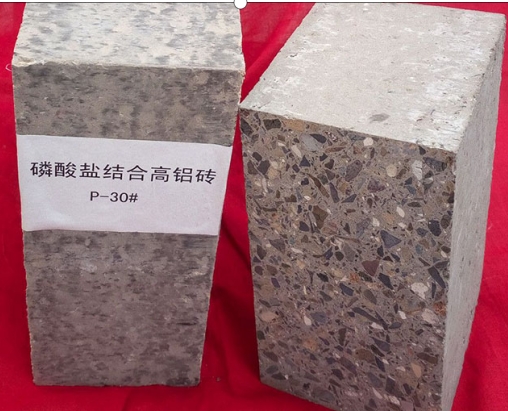- 16
- Feb
Selection of Refractory Brick Lining in Different Parts of Blast Furnace
Selezione Mattone refrattario Lining in Different Parts of Blast Furnace

The blast furnace is currently the main smelting equipment, which has the characteristics of simple public welfare and large production capacity. Refractory brick lining occupies an important position in the blast furnace. However, in the production process, the refractory brick lining of the furnace wall is gradually corroded due to various functions. Therefore, in order to prolong the service life of high-temperature furnaces, it is necessary to select refractory brick linings reasonably. The selection method of refractory brick lining for each part is as follows:
(1) Furnace throat is mainly affected by the impact and wear of the charge. Generally, steel bricks or water-cooled steel bricks are used.
(2) When modern large-scale blast furnaces adopt thin-walled structures, refractory materials with good chemical resistance and wear resistance should be selected. Among them, high-density clay bricks are the most suitable and usually used to replace brick linings.
(3) The damage mechanism is mainly thermal shock spalling, high temperature gas erosion, precipitation of alkali metals, zinc and carbon, and chemical attack of the initial slag. The brick lining should be made of refractory materials resistant to thermal shock, primary slag erosion and corrosion resistance. Practice has shown that no matter how good the refractory material is, it must be eroded. Only when equilibrium is reached (about half of the original thickness) can it be stabilized. This time it was about 3 years. In fact, sintered aluminum carbon bricks with better performance (much cheaper) can also achieve this goal. Therefore, aluminum-carbon bricks can be used in blast furnaces of 1000m3 and below.
(4) The main cause of furnace belly damage is the erosion of high-temperature gas and slag iron. The heat flow intensity of this part is very high, and no refractory material can resist the refractory material for a long time. The service life of the refractory material in this part is not long (1~2 months long, 2~3 weeks short). Generally, refractory materials with high refractoriness, high load softening temperature and high bulk density are selected, such as high alumina bricks and aluminum carbon bricks.
(5) Furnace tuyere area. This zone is the only oxidation reaction zone in the blast furnace, and the high temperature can reach 1900-2400℃. Thermal stress caused by high temperature, high-temperature gas erosion, slag iron erosion, alkali metal erosion, cyclic movement coke erosion, etc. will cause damage to the brick lining. Modern blast furnaces use composite bricks to build the tuyere area of the hearth. The materials are high alumina, corundum, mullite, brown corundum, silicon nitride and silicon carbide composites, and can also be used for hot-pressed carbon blocks.
(6) In areas where the lining of the blast furnace is severely corroded, the degree of corrosion has always been the basis for determining the service life of the first-generation blast furnace. In the early days, because there was no cooling, the bottom of the blast furnace mostly used a single ceramic refractory material. Therefore, the main causes of damage are the masonry cracks caused by thermal stress and the floating of bottom bricks caused by the penetration of molten iron into the cracks, the penetration and corrosion of molten iron on carbon bricks, the chemical attack of alkali metals on carbon bricks, and the impact of thermal stress on carbon bricks. Destruction and oxidation of carbon bricks by CO2 and H2O are still important factors that threaten the service life of furnace bottoms and hearths.
The production conditions of each part of the blast furnace are different, so different areas need to choose different refractory materials and use them accordingly to avoid unnecessary troubles causing the refractory materials to fail to meet the requirements and other problems.
